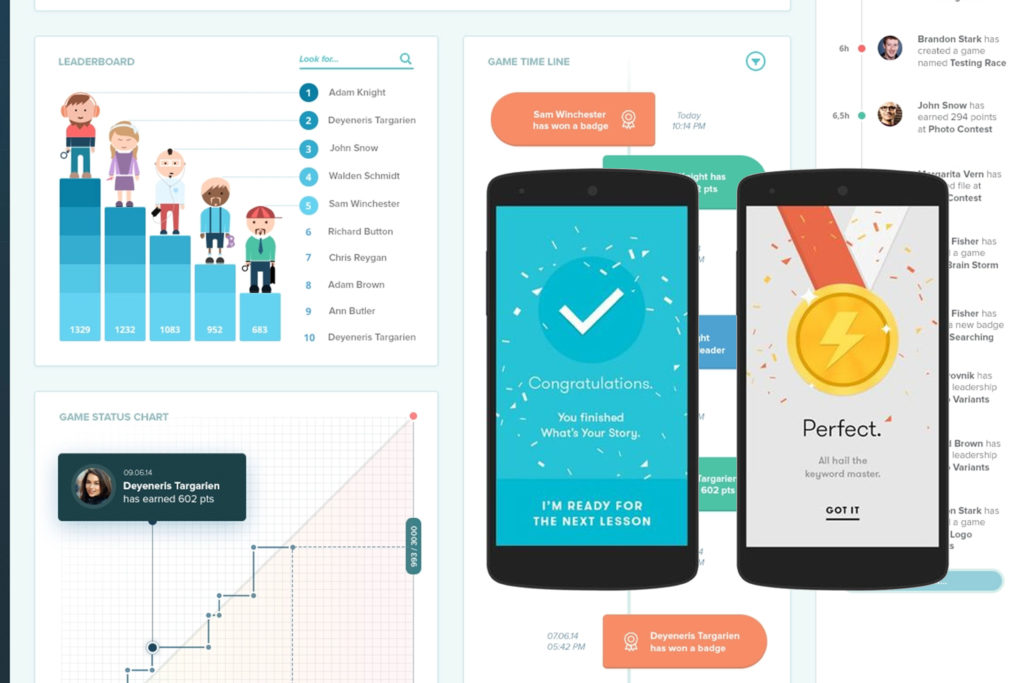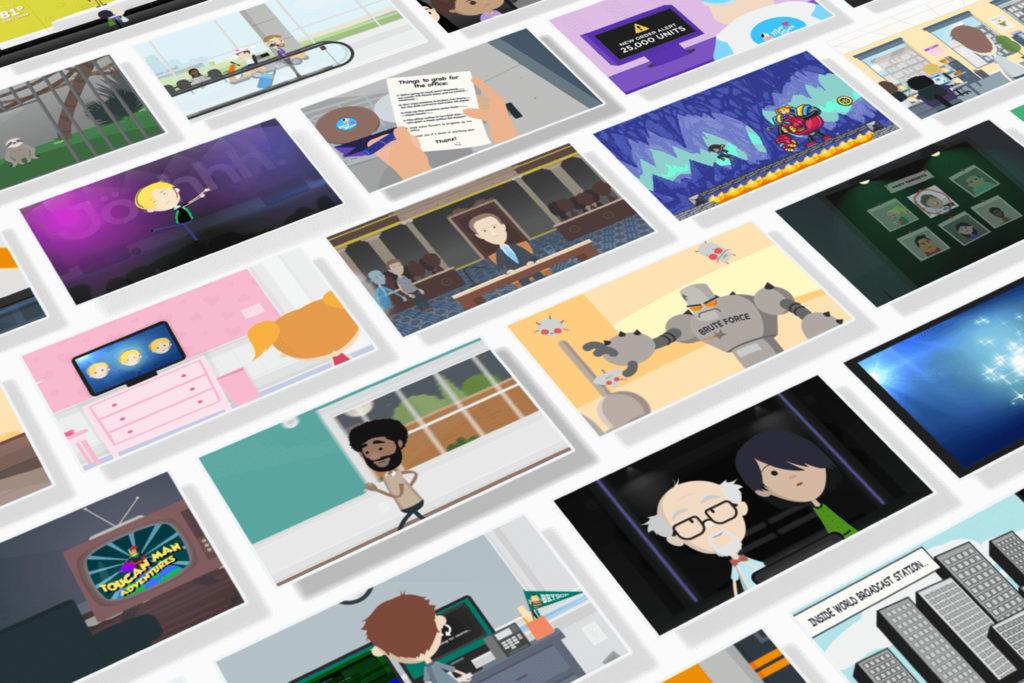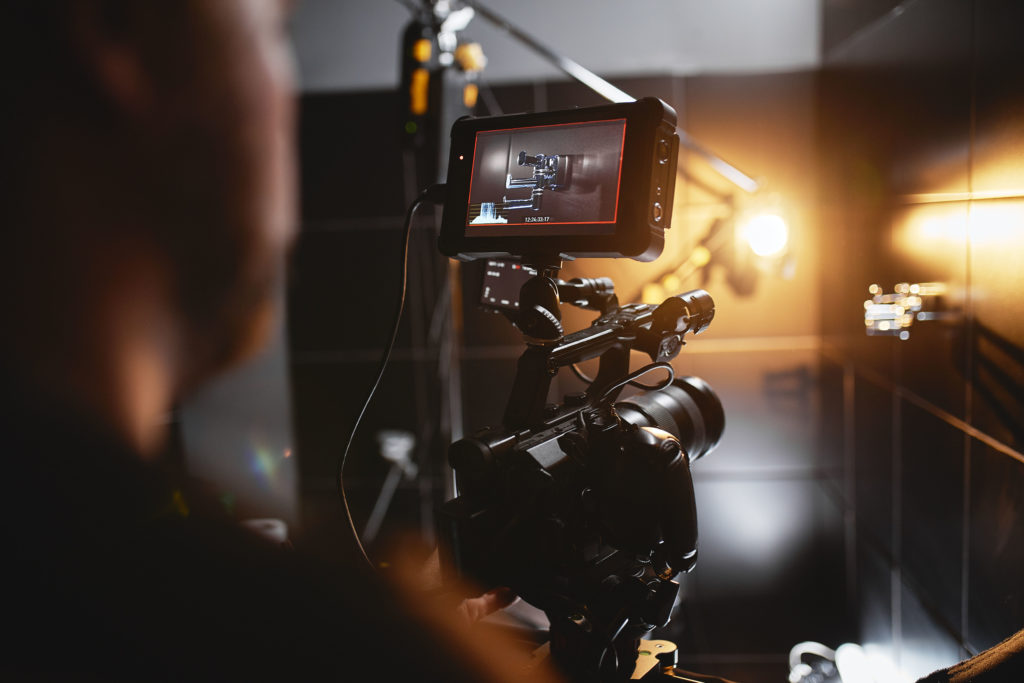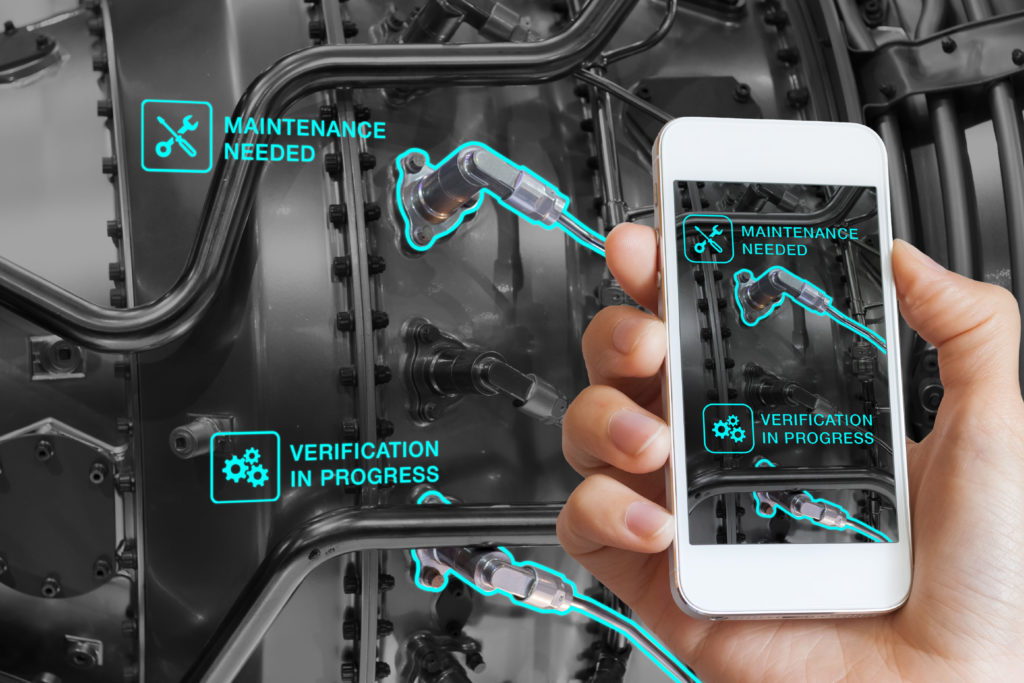According to the 70-20-10 model for Learning and Development, the bulk of our learning (70%) is Experiential Learning followed by Social Learning (20%) and only 10% of learning is through structured or Formal Learning. With the latest US Army campaigns to recruit a more diverse Gen-Y/Z, investing in Informal Learning makes sense as it adds value in the first two ways we learn and can be used to support Formal Learning too.
GAMIFICATION

Learners are drawn to Gamification because it makes learning fun. Gamification based techniques improve engagement, retention, and learner productivity.
Gamified portals assimilate concepts like learning paths with Microlearning, Personalization, and Social Learning.
Long-term Gamification involves the completion of larger milestones, real-time simulations, and monthly evaluations of a learner’s performance.
Microlearning based Gamification offers learners “bite-sized” Gamification experience, usually ‘pushed’ through their mobile devices.
SCENARIO BASED TRAINING

SBL provides learning in a safe environment and teaches learners the impact of their choices and how to learn from their mistakes.
We use the 3C model to create the right learner engagement.
Challenge – Present the learners with a problem/scenario.
Choices – Ask the learner to choose a response to the problem.
Consequences – Take the scenario forward and branch through the learning path based on the learners’ response.
STORY-BASED LEARNING

Story Based Learning creates higher retention and recall, leading to a memorable and sticky learning experience. It drives attitudinal change and converts abstract concepts into something that is relatable for learners.
Our Story Based Learning approach has a beginning – background or origin, a middle – build-up through challenges, and an end – a logical conclusion with take-aways or that which triggers the required action. The right blend of a captivating narrative and creative Instructional Design principles enable us to design a clear information structure that offers an immersive learning experience.
VIDEO-BASED LEARNING

Young learners are easily distracted and often multi-task. Video Based Learning can bridge the gap between a young learner’s shorter attention span and proficiency level.
Microlearning Videos are short, focused videos used to supplement Formal Training for just-in-time or instant ‘how-to’ job aids.
Interactive Video address more complex concepts and we create interactive videos with features like scenario-based branching. These types of videos create highly engaging and immersive learning experiences.
BRANCHING SIMULATIONS

Branching Simulations allow learners to explore various decision-making paths to achieve learning objectives. We use the right combination of Instructional strategies to develop, map, and plot each branching path to help learners visualize and make informed decisions.
Structured and timely feedback
We provide focused feedback in the moment of need, adding unique cues such as visual meters to indicate how learners fare with their decisions.
Practicing in a controlled environment
Learners can practice their skills in a virtual environment to help them learn without any negative repercussions.
VIRTUAL REALITY

VR/AR promotes the concept of ‘learn by doing’. We use advanced 360-degree image and video capture to build immersive experiences for users to engage, explore, and interact with.
360 images or videos with interactive hotspots that show key learning content in crisp and engaging formats like videos, links, job aids, quizzes, and mini games.
3D virtual immersive experience using virtual scenarios involving avatars, interaction between characters, and task performance.
360 real videos with real characters used to create virtual simulations with decision making and Gamification.
